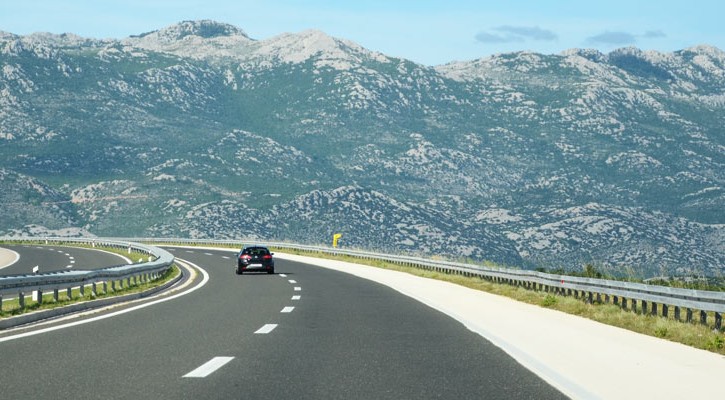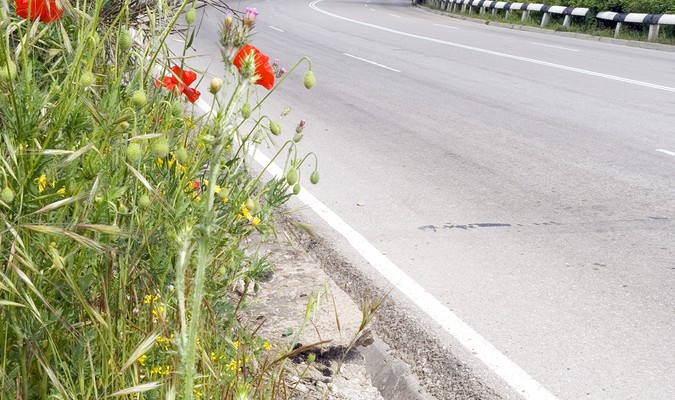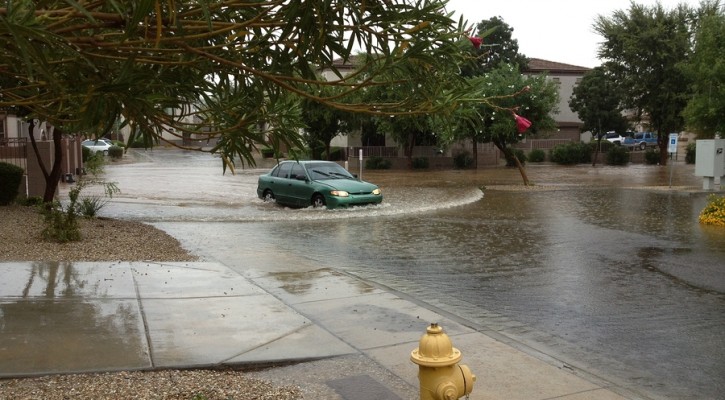Drive Right. Chicks Dig It.
March 28, 2014
No, you don’t look cool Mr. Speed Racer going 50 mph on a 30 mph street. You are going to hurt someone, and let’s just pray that you don’t kill anybody. Drive slow because it saves lives… also, because chicks like guys who aren’t a threat to their safety.
Houston’s Pro-Cyclist City Plan
March 26, 2014
Houston has taken a huge step towards improving bicycle safety. “By working together we can become one of the most bicycle-friendly cities in the nation,” Mayor Annise Parker said in a press release. That’s big news for a big city that isn’t known for its bicycle-friendly infrastructure. However, city officials and safe-biking activists have collaborated to create plan that just might work.
Dubbed “Goal Zero”, the improved safety plan includes stepping up enforcement and penalties for reckless drivers and cyclists, and launching a public awareness campaign that could integrate with the drivers license test. Additionally, the city is dedicating $50,000 to hire a firm that will create a Bicycle Management Plan to help guide future infrastructure and recommend locations for dedicated bike lanes on Houston streets.
No matter what city you are in, respecting and sharing the road with cyclists is vital to ensuring everyone’s safety. Give cyclists plenty of room, pass with care and don’t ever, ever drive distracted.

Driving in the Wind
March 25, 2014
It’s been windy across the states lately. Learn all about how to drive in high wind conditions from the Illinois Department of Transportation:

Stuck in the Mud
March 25, 2014
The snow is melting, the spring rains are falling, and chances are, plenty of trucks and cars will end up stuck in the mud this spring. Whether you’re trekking down a dirt road or have spun off the highway into a mud pit, these tips will help you get out of that mess and back on solid ground in no time.
Rock Out. You can attempt to “rock out” of the mud by keeping the wheels straight and lightly accelerating back and forth, between drive and reverse. As the wheels start to spin, quickly switch direction, rocking forward and back until you escape the ruts. If you can’t escape, and the ruts only continue to deepen, then try the next step.
Add Traction. Lay dry, solid objects beneath the edge of the tires in the direction you intend to go. Rocks, sticks, boards, gravel or floor mats work well. If you are already dug in up to the undercarriage, then use the vehicle’s jack to lift the tires off the ground. Remember to make sure that the jack is on solid ground, and never get underneath the vehicle while it is jacked up. Once it’s lifted, you can add the rocks, sticks, etc. underneath the tires to both add traction and lift the car out of the mud. It may also be necessary to add traction along the path of your escape route to ensure you will keep on rolling until the vehicle is on solid ground.
Deflate Tires. Use a tire pressure gauge to reduce air presssure. This will greatly increase the traction on mud and sand. Offroader.com recommends dropping between 18 and 20 pounds of pressure per square inch. Once you’re back on the road, don’t forget to re-inflate your tires as soon as possible.
Call for Help. If you have tried it all and are still stuck in the mud, it’s best to just call for help. Usually, a friend with a truck and tow strap is all you need. However, if you’re on your own then there are plenty of services available. Road assistance programs such AAA or Better World Club can get you out in a jiffy. Telematics systems such as GM’s OnStar may be an option. Some insurance policies include roadside assistance, or you can look up the number for a local tow truck service.
Young Drivers Vs Truckers
March 23, 2014
If you’re a new driver, then chances are you haven’t gained much experience in sharing the road with truckers. You may not realize that driving around an 18-wheeler is different than driving around other vehicles. If so, then this quick rundown on safe driving techniques is for you:
Mind Wide Turns. Large trucks make wide turns, and must swing left before making a right turn, or swing right before making a left turn. So, watch their turn signals and give them plenty of room to maneuver, and never drive between a turning truck and the curb or your car will get stuck.
Avoid Blind Spots. If you can’t see the driver, then the driver can’t see you. If you are driving along the left or right side of a truck, then make sure you can see the driver in the side mirror. If you can’t see them, then slow down or speed up immediately to get out of their blind spot.
Don’t Tailgate. If you drive too close to a large truck, then you won’t be able to see what is happening down the road, and the trucker won’t be able to see you at all. If, for any reason, the truck should need to stop quickly then you are likely to run right into their rear end. Or, if you decide to switch lanes then you will be emerging from a blind spot into a blind spot, which means that if the trucker switches lanes you are likely to get hit. Also, many trucks haul trash, dirt, trees and other debris that could fly out and damage your vehicle.
Don’t Cut Off. It is extremely dangerous to cut off a truck in traffic. It takes a large tuck considerably more time and distance to stop, meaning that your life will be at risk if you must slow down because of traffic or road hazards.
Be Predictable. Make life a little easier for the working trucker by driving like a sane, predictable person. Maintain a constant speed, use your blinkers with plenty of signal time, and slow down gradually, giving others on the road plenty of time to react.
Be Alert. Avoid distractions such as texting or talking on the phone, keep your hands on the wheel and your eyes on the road. Since trucks can’t stop as quickly as cars, any mistakes you make will become more fatal if you are on the same road as a truck.
Be Considerate. People driving trucks and buses are at work. They are there because it is their job. They are not there to make your life more difficult, in fact, just the opposite. Bus drivers are transporting people where they need and want to go. Truckers are delivering the goods that everyone needs and wants to buy. They are all there to make your life easier, so show some respect.

Springtime Street Smarts
March 23, 2014
Winter is finally over, spring is here, and the roads are beginning to look a little kinder. The snow is melting, the grass is growing and the flowers will be blooming any day now. However, just because we’ve made it through the winter doesn’t mean that the streets are hazard-free. Springtime driving has its own list of dangers, and whether you’re commuting to work and school or planning to travel across the country, it’s important to be aware of the common causes of spring season accidents.
Winter Damage. Snow and ice can wreak havoc on asphalt. Snow plows, salt, sand and freezing water leave behind cracks and potholes, so expect some new road damage as everything begins to melt.
Wildlife. Many animals are becoming more active as the hibernation season ends and mating season begins. Keep an eye out for wildlife on the roads, especially deer at night and early in the morning. When trying to avoid hitting an animal, you can brake but DO NOT SWERVE. Best practice is to tap on your brakes to warn vehicles behind you, honk, and then slow down as safely as possible to let the animal(s) pass.
People. The gorgeous, sunny weather is irresistible to pedestrians and cyclists, making spring one of the most dangerous times to be a distracted driver. Children will be playing in the streets, people will be walking around town and cyclists will be pedaling on every roadside, including those curvy country highways. Spring is also the season of the motorcycle, so don’t forget to take extra caution when changing lanes and making turns.
Weather. Spring weather is a fickle beast. Temperatures can soar up to 80 degrees and drop well below freezing in a matter of hours. Just because it’s warm enough to go swimming doesn’t mean it’s time to unpack to snow gear. Hail season will take its toll in the hail-belt (Wyoming, Colorado, Kansas and Missouri), and flood season will cause dangers across the country. Heavy rains and melting snow make travel especially dangerous for drivers. Wet roads greatly reduce traction and control, as well as increase braking distance. In fact, wet roads are the cause of 75% of weather-related crashes each year.

Flood Season Driving Tips
March 22, 2014
Flood season is upon us. In cold weather states, melting snow and rapidly changing weather can cause severe flooding on roadways. Meanwhile, as summer approaches the southern states will begin experiencing both northern and coastal storm systems that bring floodwaters rushing down rivers and creeks.
During severe weather and flooding, it best to not drive at all. However, many drivers have obligations that will force them onto the road in spite of present dangers. Here’s how to handle your vehicle when you absolutley must drive during a flood watch or warning:
Drive Slow. This is a no-brainer. Driving slow will not only help maintain traction and control on slippery roads, but also allow you to see hazards sooner.
Avoid Puddles. Puddles often form where roads have been damaged. A deep pothole will not only damage your tires, but also your engine. Water deeper than 6 inches will reach most vehicles, causing them to lose control and/or stall.
Turn Around Before Your Drown. If water is flowing over the road, then turn around. It only takes 6 inches to stall a vehicle, 1 foot to float it, and 2 feet to sweep it down the river or creek. This applies to trucks and SUV’s as well.

In-Your-Face Safety Tech
March 17, 2014
Volvo is testing Sci-Fi style safety features with a hi-tech infrared system that can pick up its driver’s position and eye movements. The idea is to prevent accidents by recognizing when the driver is tired or not paying attention, as well as implementing other features such as automatic mirror, seat, and headlight adjustments for better visibility. Toshiba is also testing facial-recognition software with a program that can detect drowsiness and distraction along with convenient features such as tuning the radio with the blink of an eye. Meanwhile, scientists in Switzerland are developing technology that can detect emotions such as road rage and other mental conditions that would distract the driver.
It is still unclear how this data will be used. For instance, your smart car may act as a sort of backseat driver, giving suggestions such as “keep your eyes on the road”, or it could quietly switch to an automatic mode when it recognizes road rage in your facial expressions. In any case, automakers are embracing future technologies and their role in making us all safer drivers.


